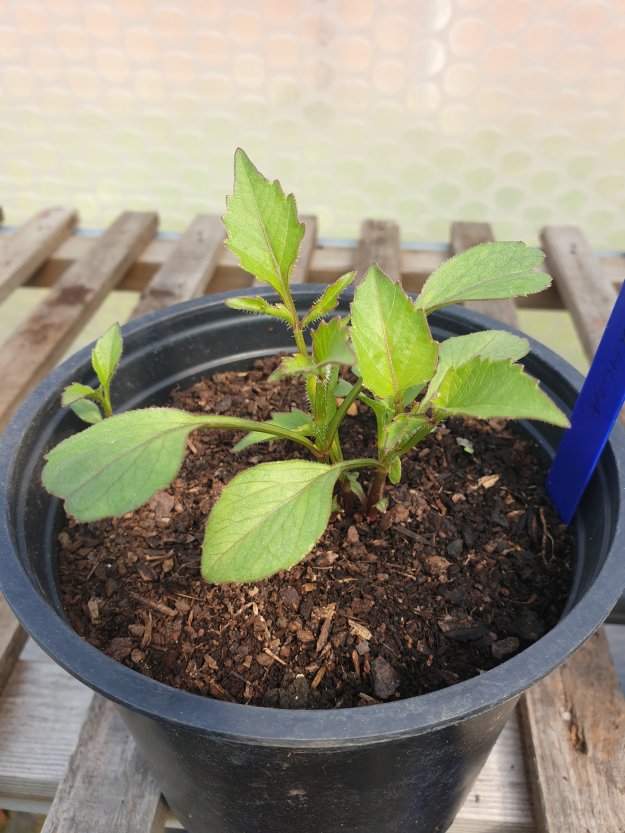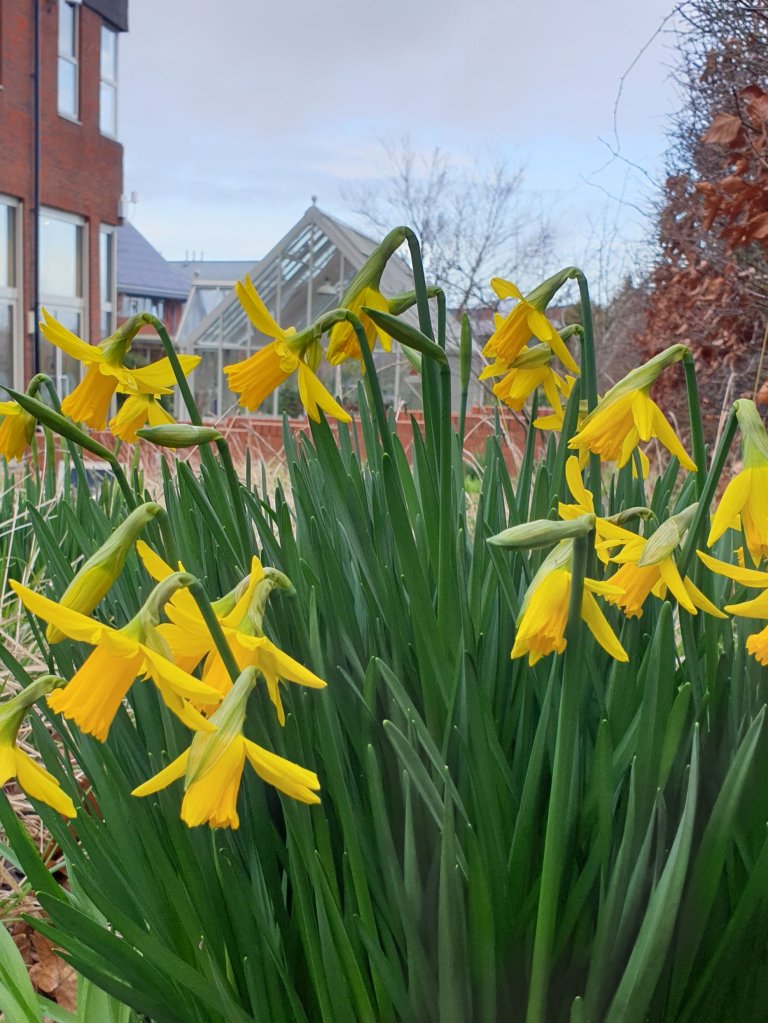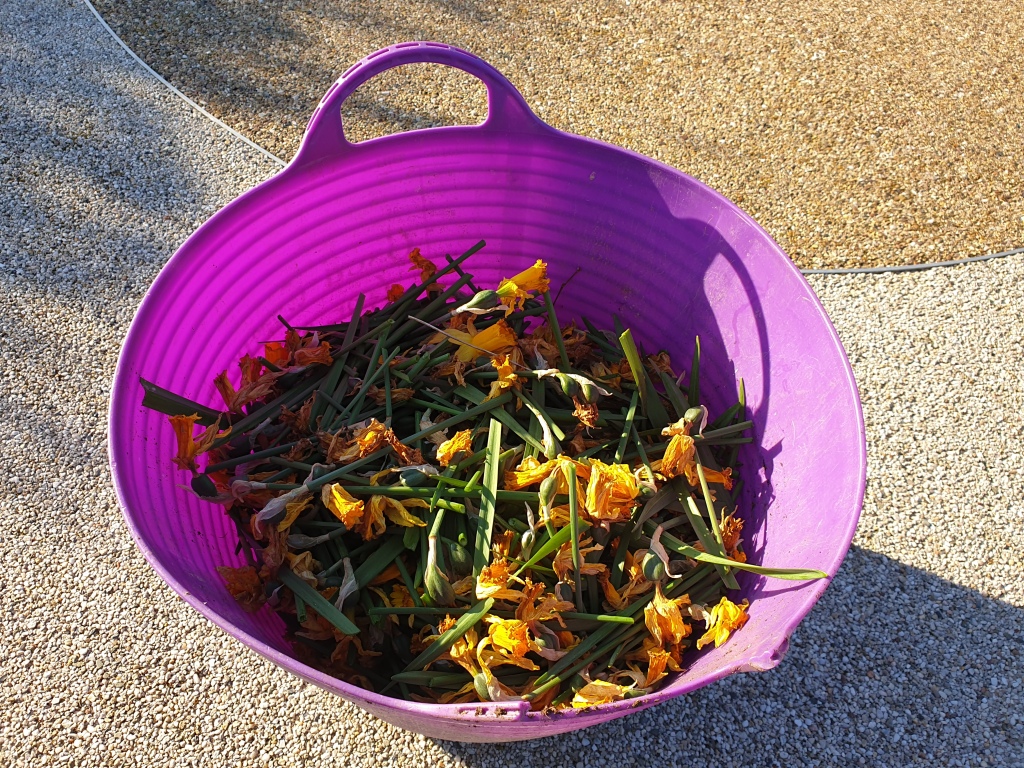I had run out of compost last week, which rather brought things to a shuddering halt. Cuttings and seedlings which were in need of attention were languishing in their trays and small pots, unable to push on to their next stage of growth. One of the other tasks which risked becoming late was to take the dahlias out of winter storage and give them the kick-start they need at this time of year. Thankfully, compost was found (thank you very much Wilton House Garden Centre – who delivered a load of peat-free compost with great efficiency), and the starting-gun was duly fired…
So, this morning has seen the dahlias see the light of day. Some of the Dahlias at Horatio’s Garden are left in the ground over winter, it being mild and generally dry (or at least free-draining) up on the top of Odstock Down. However, they’ve declined of late – looking at photographs of the garden from even 3 years ago revealed a much better display. So I lifted those that were worth the effort, and they have been stored under the staging in our polytunnel. Christopher Lloyd is rather rude about gardeners who don’t lift and store their dahlias:
“Some people rather pride themselves on leaving their dahlias in the ground year after year and getting away with it. Good luck to them…” (Cuttings, 2007)
It was Christopher Lloyd’s enthusiasm for dahlias which first turned me on to them, while he in turn (somewhere, I can’t find the reference) credits the arrival of Fergus Garrett at Great Dixter with his renewed enthusiasm. Either way, I feel I am in good company, having come to dahlias late in my gardening life.
Taking the dahlia tubers out of winter store always reminds me of getting the Christmas decorations down from the attic. There is a similar sense of anticipation (after all, the dahlias won’t actually flower until late summer), along with disappointment (some tubers have gone soft or shrivelled up – the equivalent of finding that a bauble has broken in the box), and surprise when you discover a pretty one you’d forgotten about.

Stored dahlias are not a thing of great beauty, somewhere between an alien and a dismembered scarecrow, but they are full of promise
One or two of the tubers were already showing green shoots, in spite of having been deprived of any earth since October time. I potted them all up in nice, fresh peat-free compost, and gave them a good water. They will now sit happily in the (unheated) polytunnel for a few weeks, possibly yielding some root cuttings as they start to sprout, and then being moved outdoors for the summer when we get there.

Most of the dahlias have been potted-up in fresh compost. Those scruffy pots behind contain cane begonias, which were also left over winter and have now started to emerge.
At home I am lazy and tend to leave my dahlia tubers in their pots over the winter in the greenhouse. Then in spring I check them over, freshen up the compost and leave them to get on with it. I’ll move them outdoors once the spring bulbs are over and there is some space in borders and large pots (currently full of tulips). What this does mean is that they can get a head start, weather and snails permitting, and produce new shoots good and early.

This dahlia has had a head start as I left it in compost all winter. Unfortunately it’s lost its label, so we wait to see what it is…
Rather as taking out the Christmas decorations is both a pleasure in itself and a foretaste of the enjoyment to come, so too the dahlias’ emergence promises colour and joy later in the year. And goodness knows we need that.





